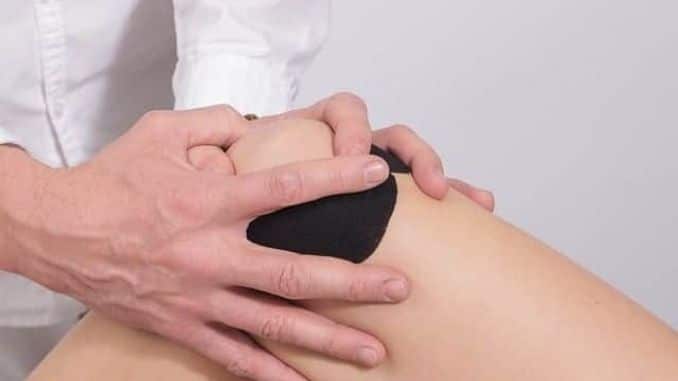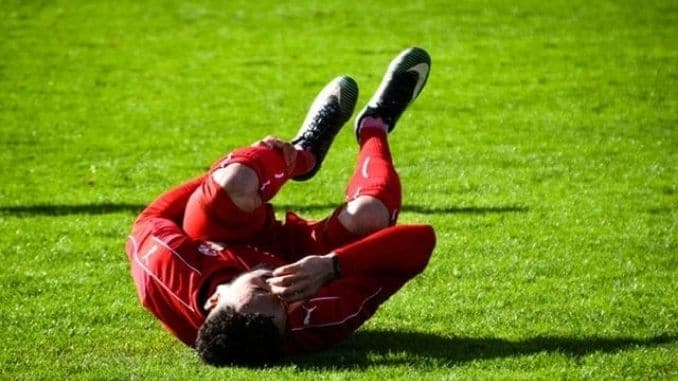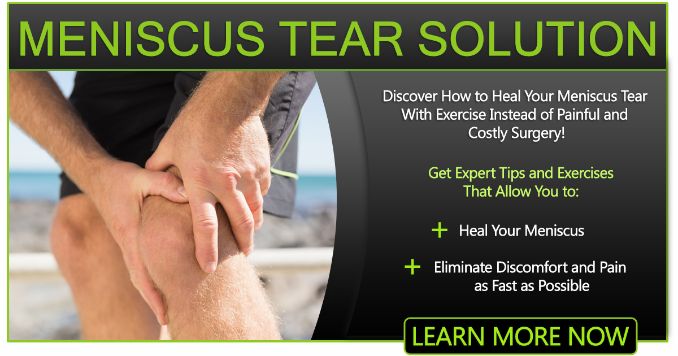In 2006, there were about 1 million arthroscopic knee surgeries performed in the United States, and about 700,000 of those were for meniscus tears. A recent 2017 study noted that surgery for a meniscus tear is “one of the most popular orthopedic procedures, but long-term results are not entirely satisfactory.” In this article, let’s learn about how Is Meniscus Surgery Safe.
Indeed, if you or a loved one has been told that you have a torn meniscus and that you need surgery, you may want to do some more reading before going under the knife. Studies have shown that, in many cases, Meniscus surgery is not safe or produces no better results than time and physical therapy.
What Is A Knee Meniscus?
Everyone has two menisci (plural of meniscus) in each knee — one on the inside of the knee and one on the outside. These C-shaped pieces of cartilage face each other in the center, forming a sort of figure-8 padding that cushions and supports the knee joint. Each one is like a cap on top of the shinbone and both rest underneath the articular cartilage that supports the thighbone.
Throughout your life, the menisci protect the knee joint surfaces and help absorb shock from your activities. In addition to dissipating forces across the knee joint, they also help stabilize it as you move. When you walk, for example, the forces shift from one meniscus to the other, with each absorbing part of the load.
The menisci are hearty pieces of cartilage, but they can be damaged or torn. When that happens, you may experience pain and other symptoms that cause you to seek your doctor’s advice.
What Is A Torn Meniscus?
A torn meniscus is one of the most common knee injuries and occurs when one of the menisci is injured. Although these parts of the knee are made of cartilage, they can still be torn as the fibrous tissues are susceptible to damage.
Moreover, if you were able to look at it, you would see an actual tear injury with potentially ragged edges, much like a torn piece of paper. The tear can also occur along the edges of the meniscus or somewhere in the middle of it.
Doctors usually divide meniscus tears into two types:
1. Traumatic Tear
This type of tear occurs quickly and during activity. It usually is the result of a forceful twisting action while the knee is flexed, such as what may occur during an athletic event or during a slip and fall. It also commonly occurs together with an anterior cruciate ligament (ACL) injury. The ACL is a ligament that connects the thighbone to the shinbone.
2. Degenerative Tear
This type of tear is related to the degeneration of the cartilage that occurs with age or as the result of arthritis. If the articular cartilage breaks down, the bone surface may tear into the meniscus. Repetitive stress on the knee, such as that which may occur with a job that requires a lot of squatting, can also lead to a degenerative meniscus tear.
Doctors also categorize a tear in terms of how it’s shaped. A “bucket-handle” tear, for example, often occurs in the middle of the meniscus and is wide and long. A longitudinal tear is slimmer and often near the edges. A “parrot-beak” tear is more angular in shape and takes a “bite” out of the inside of the meniscus. A “radial” tear occurs on the inside edge and looks like you took the two sides of the C-shaped cartilage and pulled them apart, to create a tear in the middle. A “complete” tear goes all the way through the meniscus, separating a piece of it from the rest.
Doctors may describe the tear as “stable” or “unstable.” A stable tear is on a meniscus that doesn’t move and is, therefore, more likely to heal on its own. An unstable tear is on a meniscus that is likely to move around abnormally and could cause additional complications if not surgically repaired.
How the tear is shaped, where it occurs on the meniscus and how severe it is all factor into the doctor’s decision for treatment. Minor tears, for example, are often treated conservatively with rest and exercise while more severe, larger tears may require Meniscus surgery safe.
How Do I Know If I’ve Suffered A Torn Meniscus?
Pain is the most common symptom of a tear, but pain alone could signal other problems too.
Only a doctor can determine if you have a tear, so it’s important that you make an appointment, in the meantime, you can also watch for these other symptoms:
- Sharp, intense pain in the knee
- Swelling (may be recurrent in degenerative tears)
- Difficulty walking and going up and down stairs
- Difficulty straightening and bending the knee
- Catching, locking, clicking, and pinching sensations
- A feeling that the knee is “giving way”
- A “pop” or tearing sensation at the time of the acute injury (in the case of a traumatic tear)
Symptoms vary depending on the type of tear. An acute tear, for example, is likely to cause symptoms right away, but a degenerative tear may result in a slower onset of symptoms. Pain is usually the first one. It may go away with rest but then will return with activity. Movement can also cause the swelling to return or worsen.
How Is A Torn Meniscus Treated?
Treatments vary depending on how severe a tear is, and whether or not it’s stable. Tears that occur in the outer portion of the meniscus are more likely to heal on their own as that area receives a richer blood supply than the inside area. As blood comes into the area, the tear receives the nutrients it needs to heal. Tears on the inside of the meniscus may need more time, but some of these may heal on their own as well.
Common nonsurgical treatments include the following:
1. RICE
Rest, regular icing, a compression wrap, and elevating the injured knee are sometimes all that’s needed to help it heal; it’s also a good approach for treating the injury even if you go on to use other treatments as well
2. Anti-inflammatory Medications
These anti-inflammatory help to reduce pain and swelling, and also include over-the-counter options like ibuprofen and aspirin.
3. Physical Therapy
Certain exercises and stretches can help reduce swelling and restore a normal range of motion; physical therapy can be used as a treatment on its own or before or after safe Meniscus surgery
4. Injections
Corticosteroid injections can help relieve pain and inflammation, but they can be used for only a limited amount of time.
5. Electrical Stimulation
Stimulation of the muscles around the knee can help improve support for the meniscus while it heals.
No matter which of these treatment methods are used — sometimes, a combination of treatments works best — it’s best to be patient. Healing typically takes six to eight weeks. If none of these options are effective, safe Meniscus surgery may be necessary.
Surgeons typically choose one of two options:
-
Repair
During safe meniscus surgery to repair the meniscus, the surgeon uses sutures to stitch the tear back together.
-
Removal (Meniscectomy)
During a meniscectomy, the surgeon removes part of the meniscus or the entire thing; if he or she removes only part, he or she often repairs what is left; only as a last resort is the whole thing removed as without the meniscus, the knee is left with much less support, which can lead to additional complications down the road, including accelerated arthritis.
The Downsides Of Surgery For A Meniscus Tear
No one wants to go through Meniscus Surgery if not safe, but if your doctor tells you it’s required, then most likely it’s the best option, right?
Not always. In fact, according to several studies, Meniscus surgery often is safe creates no better results than physical therapy, and, sometimes, can result in worse outcomes.
In 2014, scientists reported that there had been an increased number of surgical meniscus repairs performed in the U.S. during a period of seven years, with a doubling of repairs from 2005 to 2011. Similar increases have been reported in other countries, with Denmark reporting a doubling of meniscal procedures between 2000 and 2011, with the largest increases in middle-aged and older patients.
Meanwhile, there have been more studies published questioning the effectiveness of these surgeries. The researchers in the Denmark study also stated, “This increase [in surgeries] contrasts with the mounting evidence showing no added benefit of arthroscopic partial meniscectomy over nonsurgical treatments.”
In 2007, for example, researchers compared two treatments for nontraumatic meniscus tears: surgery with exercise afterward and exercise alone. Results also showed that the surgery provided no additional benefits. Both groups reported decreased pain, improved knee function, and high satisfaction. Researchers therefore concluded that safe Meniscus surgery was not superior to exercise alone in terms of reduced knee pain, improved knee function, and improved quality of life.
Later, in 2013, researchers zeroed in on degenerative meniscal tears and found again that surgery plus physical therapy worked no better than physical therapy alone. Both groups showed clinical improvements at 2-year and 5-year follow-ups with no differences found.
Furthermore, the researchers wrote, “The findings indicate that arthroscopic surgery followed by exercise therapy was not superior to the same exercise therapy alone for this type of patients. Consequently, exercise therapy can be recommended as initial treatment.”
One-third of the patients from the exercise-alone group still had disabling symptoms after exercise therapy but improved after a partial meniscectomy.
In another study of 351 patients, researchers looked at data from those who had surgery and compared it to data from those treated with physical therapy alone and found no significant differences between the two groups in functional improvement after six months. About 30 percent of physical therapy patients undergo surgery within six months.
Several other studies have found similar results — that in the majority of cases, particularly when dealing with degenerative meniscal tears, surgery works no better than physical therapy alone. One study even compared meniscectomy surgery to “sham surgery.” Patients either received a real partial meniscectomy or underwent a procedure in which they received a couple of small incisions so that they thought they went through surgery.
Again, the results were no different between the two groups — both experienced improvements in pain and knee function. Furthermore, there were no significant differences between the groups in the number of patients who required subsequent knee surgery.
There are some cases where surgery may be needed down the road but considering these findings, it seems that most patients could benefit from physical therapy before determining whether surgery is needed.
Can Surgery Create Other Complications?
Surgeons know that if they remove part or all of the meniscus, there is a higher risk for knee arthritis down the road. In a 2017 study, for example, researchers analyzed data from 335 patients who went through a meniscectomy and found that 18.8 percent had to undergo knee replacement surgery in the same knee years later. Researchers then concluded that patients going through meniscectomy had a threefold increased risk of future knee replacement surgery.
When something’s wrong, we often feel compelled to try to “fix” it. Because of that, surgery can be a compelling option. Researchers looked at 53 studies comparing surgery to a placebo and found that in about half the trials, the surgery had no better effect than the placebo.
Meniscal tears are much more common than you may think and can often heal on their own (with a little exercise). In fact, they often exist in older patients without causing any symptoms.
In 2006, researchers reported that meniscal tears were almost equally found in symptomatic (causing pain) and asymptomatic (no-pain) knees and that they were common in older patients. A 2008 study also reported similar findings, stating that meniscal tears are “common in the general population and increase with increasing age.” This finding casts doubt on the idea that most meniscal tears need surgery.
Types Of Exercise That Can Help A Torn Meniscus To Heal
Always check with your doctor before engaging in any exercise or physical therapy program for a torn meniscus.
Below are some commonly recommended exercises that can help:
1. Knee Extension
Lie on your back and place a rolled-up towel under the heel, so it’s about 6 inches off the ground. Relax and allow your knee to straighten gradually. Try to hold for 2 minutes and repeat three times.
2. Heel Slide
Lie on your back, legs out. Keeping the heel down, slide the foot along the ground slowly while bending the knee upward. Slide the heel as far toward the buttocks as you can and hold.
3. Straight-Leg Raise
Lie on your back with your good knee bent and the injured leg straight. While holding that leg straight, lift it gradually, so your heel is about 12 inches off the floor. Hold for 5 seconds and lower slowly.
4. Hamstring Curl
Lie on your stomach with your legs straight. Bend your injured knee, bringing the heel toward your buttocks. Go as far as you can and hold and then lower slowly.
5. Clam Exercise
Lie on your good side with hips and knees bent, feet together. Raise your top leg toward the ceiling while keeping the heels touching. Hold for a couple of seconds and lower slowly. Repeat.
6. Hip Abduction
Stand on the uninjured leg, feet together. Hold onto something nearby for support, if needed. Raise the injured leg straight out to the side as far as you can slowly, then bring it back to center slowly.
7. Heel Dig
Lie on your back, both knees bent, ankles bent so that only your heels are digging into the floor. Pull the belly button toward the spine and lift your hips off the floor gradually until the shoulders, hips and knees are in a straight line. Hold for about 5 seconds and lower slowly to the floor. Repeat.
If you want to repair your meniscus tear and eliminate discomfort and pain as fast as possible, then check out the Meniscus Tear Solution program, here!






